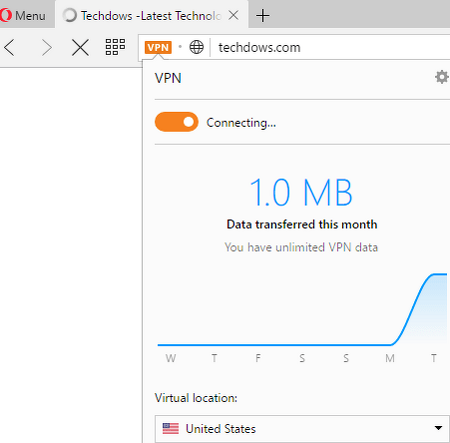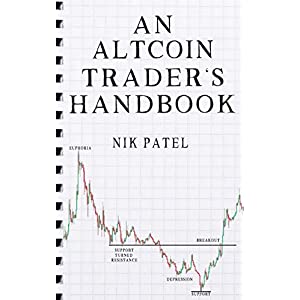Contents
ERC-20 is the standard developed after the release of ETH to define how tokens are transferred and how to keep a consistent record of transfers among tokens on the Ethereum Network. Because ETH is the proto-token of Ethereum network, it was built before ERC-20 and thus does not conform to its own ERC-20 standard. By wrapping ETH in ERC-20, WETH provides a tradable asset that mirrors Ethereum value allowing users to interact with smart contracts and trade the wrapped asset with a large variety of ERC-20 assets on decentralized financial platforms and decentralized exchanges such as Uniswap. Ether, being the native currency on the Ethereum blockchain, was created before the ERC-20 standard and others standards were implemented; hence ether itself is not ERC-20 compatible and cannot be exchanged directly for other ERC-20 tokens in a decentralized manner without the mediation of a trusted third party or the addition of complex technical implementations. Instead of implementing two interfaces (one for ether and another for ERC-20 tokens) within the same smart contract leading to unnecessary complexities, developers decided to “wrap” ether to upgrade it to the ERC-20 standard in order to conveniently handle WETH and other ERC-20’s within the same contract. Wrapping ether allows the direct, seamless exchange between ether and ERC-20 tokens without the need for a trusted third-party and without incurring in unnecessary risks such as unexpected errors during transactions resulting from complex implementations.
What is a WETH token?
WETH is a form of cryptocurrency that allows users to make pre-authorized bids that can be fulfilled at a later date without any further action from the bidder. WETH is minted when a user sends ETH to the WETH smart contract.
WETH is the ERC-20 compatible and tradable version of ETH and can be used to interact with other ERC-20 assets. Please enable JavaScript to view the comments powered by Disqus.
What are the risks of using wrapped tokens?
As a decentralized exchange aggregator, 1inch utilizes wrapped tokens to quickly transfer assets through a route, achieving the best rates and efficiency for users. As mentioned, one of the most common ways to do so is by sending ETH to a smart contract. Another method is swapping wETH for another token via a crypto exchange. Meanwhile, ETH is locked to ensure that the wETH is backed by a reserve. As mentioned, wETH is the wrapped version of Ether, and it’s named as such because wETH is essentially Ether “wrapped” with ERC-20 token standards.
How to mint 10,000 NFT on OpenSea?
To do so, click on the ”Deploy” tab just below ”Solidity Compiler”. Then, select ”Injected Web3”, the right contract, and click on ”Deploy”. Once deployed, you'll receive a contract address that you can utilize to view the NFTs on the testnet version of OpenSea. That's it for this tutorial on how to mint 10,000 NFTs!
Many Ethereum-based decentralized applications such as decentralized exchange platforms use WETH in place of ether to facilitate the direct and decentralized peer to peer trading between ether in “wrapped form” and ERC-20 tokens under the same technical standard. Recent developments are trying to have a canonical WETH standard that could be used by all Ethereum-based dApps. Better interoperability solutions are on the horizon, such as updating blockchains’ codebases to be compatible with each other or using bridge chains. For Ethereum, at least, the plan is to eventually phase out the use of wrapped tokens like wETH alongside network developments. Issued wrapped tokens depend on the third-party platforms that issue them, inevitably subjecting decisions pertaining to wrapped assets to central entities.
All About WETH
Needs to review the security of your connection before proceeding. In order to use ETH on the Avalanche network, you will first need to wrap it, to WETH, before sending it across the Core.app/bridge. // Out https://cryptolisting.org/ and outsize are set to zero – instead, use the return buffer. // Delegatecall to the implementation, supplying calldata and gas. // Delegatecall into the implementation, supplying initialization calldata.
A technical standard used to issue and implement tokens on the Ethereum blockchain proposed in November 201… Whenever wETH is exchanged back into ETH, the exchanged wETH is burned or removed from circulation. This is done to ensure that wETH remains pegged to the value of ETH at all times. WETH can also be acquired by swapping other tokens for it on a crypto exchange, such as SushiSwap or Uniswap.
In the long run, however, wrapped tokens will likely become less and less necessary as blockchains become more interoperable. Currently, wrapped tokens make it possible for blockchains to interact with one another. This allows for a much more decentralized ecosystem, where tokens can be easily traded or exchanged between different platforms. 1inch also specifically uses wrapped tokens in its Limit Order protocol to serve as a more compatible and efficient means of executing orders. According to WETH.io, the ultimate goal is to update Ethereum’s codebase and make it ERC-20 compliant in itself, eventually eliminating the need to wrap Ether for the purpose of interoperability. But, until then, wETH continues to remain useful in providing liquidity to liquidity pools, as well as for crypto lending and NFT trading, among others.
Then, click “Wrap ETH.” This will call the wETH smart contract to convert ETH into wETH. In this example, we’ll be using the OpenSea platform to convert ETH to wETH using the wETH smart contract. Bitcoin also has a wrapped version called Wrapped Bitcoin, which has the same value as Bitcoin. The token page shows information such as price, total supply, holders, transfers and social links.
Briefly put, ERC-20 tokens can only be traded with other ERC-20 tokens, not Ether. In order to bridge this gap and enable the exchange of Ether for ERC-20 tokens , the Ethereum network introduced wrapped Ethereum . The wrapping process also allows assets to assume the characteristics of the network it is being wrapped on.
WETH Depth Chart
Come to think of it, stablecoins can also be considered “wrapped USD,” since they have the same value as their underlying asset, the United States dollar. Traders who use the Ethereum network are familiar with the ERC-20 technical standard and have most likely traded and invested in tokens that utilize it. After all, its practicality, transparency and flexibility have made it the industry norm for Ethereum-based projects. // Revert and include revert data if delegatecall to implementation reverts. Help.matcha.xyz needs to review the security of your connection before proceeding. Next, enter the value for the amount of ETH to be converted to wETH.
- Bitcoin also has a wrapped version called Wrapped Bitcoin, which has the same value as Bitcoin.
- Briefly put, ERC-20 tokens can only be traded with other ERC-20 tokens, not Ether.
- // Delegatecall into the implementation, supplying initialization calldata.
- // Revert and include revert data if delegatecall to implementation reverts.
- It still holds the same monetary value as real BTC, however it can be sent at much faster speeds on Ethereum.
They can provide interoperability with other blockchains and are a critical component of DeFi's infrastructure. The compiled contract might be susceptible to AbiReencodingHeadOverflowWithStaticArrayCleanup (medium-severity), DirtyBytesArrayToStorage (low-severity), DataLocationChangeInInternalOverride (very low-severity), NestedCalldataArrayAbiReencodingSizeValidation (very low-severity), SignedImmutables (very low-severity), ABIDecodeTwoDimensionalArrayMemory (very low-severity), KeccakCaching (medium-severity) Solidity Compiler Bugs. ABI for the implementation contract at 0xebb99a5b3021c86301df241d3a32dbeba5c15801, likely using a custom proxy implementation. // Set the implementation to the address returned from the upgrade beacon. The compiled contract might be susceptible to AbiReencodingHeadOverflowWithStaticArrayCleanup (medium-severity), DirtyBytesArrayToStorage (low-severity), DataLocationChangeInInternalOverride (very low-severity), NestedCalldataArrayAbiReencodingSizeValidation (very low-severity), SignedImmutables (very low-severity), ABIDecodeTwoDimensionalArrayMemory (very low-severity) Solidity Compiler Bugs.
What is WETH or wrapped ETH?
Since ETH itself is the native asset on Ethereum, it follows a different set of rules compared to the ERC20 tokens that are built upon the network. Wrapping ETH into an ERC20 version turns into WETH, allowing users to swap the value of ETH with other ERC20 standard tokens. They can also help facilitate cross-chain atomic swaps, which are becoming increasingly popular.

Once all the details are in order and the transaction has been confirmed from the user’s end, all that’s left to do is to wait for the transaction to be confirmed in the blockchain. In short, it’s not really a matter of ETH vs. wETH since wrapping Ethereum is more of a workaround than a permanent solution. With the number of upgrades slated to happen on the Ethereum network over the years, Ethereum seems to be moving closer toward better interoperability by the day.
About WETH
Ethereum co-creator Vitalik Buterin himself pinpointed one of the main disadvantages of wrapped assets. According to Buterin, the main problem with many of these wrapped assets is their sensitivity to centralization. The transaction will then need to be confirmed from the user’s crypto wallet.

Wrapped coins and tokens virtually have the same value as their underlying assets. Additionally, wrapping a token or a native asset can allow it to be interoperable with other external blockchains. For example, the Binance Smart Chain equivalent of ETH, still holds the same value as regular ETH, but follows the BEP20 standard. So if we already have ETH, why make another ‘copied’ version of it?
This means that each token is unique and as a result, not interchange… The industry’s first global standards organization to deliver an open, standards-based architecture and spe… An exchange which does not require users to deposit funds to start trading and does not hold the funds for … Currently, wrapping assets are not Turing-complete and cannot be automated via the Ethereum blockchain. As discussed, wrapping is usually only carried out using central programs, thus the concern for possible manipulation and abuse.
For example, wrapped Bitcoin is essentially Bitcoin, but built on Ethereum. It still holds the same monetary value as real BTC, however it can be sent at much faster speeds on Ethereum. Not only does wrapping provide weth token higher efficiency, it also can significantly reduce the fees for moving similar forms of value. Wrapped tokens are assets on any blockchain that hold the exact same value and tokenomics of another asset.

Buterin voiced his concerns about the possibility of such a mechanism undermining the core principles of decentralization and transparency that the blockchain industry stands for. Wrapped tokens solve interoperability issues that most blockchains have and allow for the easy exchange of one token for another. For example, users cannot normally utilize Ether on the Bitcoin blockchain or Avalanche on the Ethereum blockchain. Through wrapping, underlying coins are tokenized and wrapped with a certain blockchain’s token standards, thus allowing for their use on that network.
 Prirodna Medicina Vaše zdravlje je naš prioritet
Prirodna Medicina Vaše zdravlje je naš prioritet



